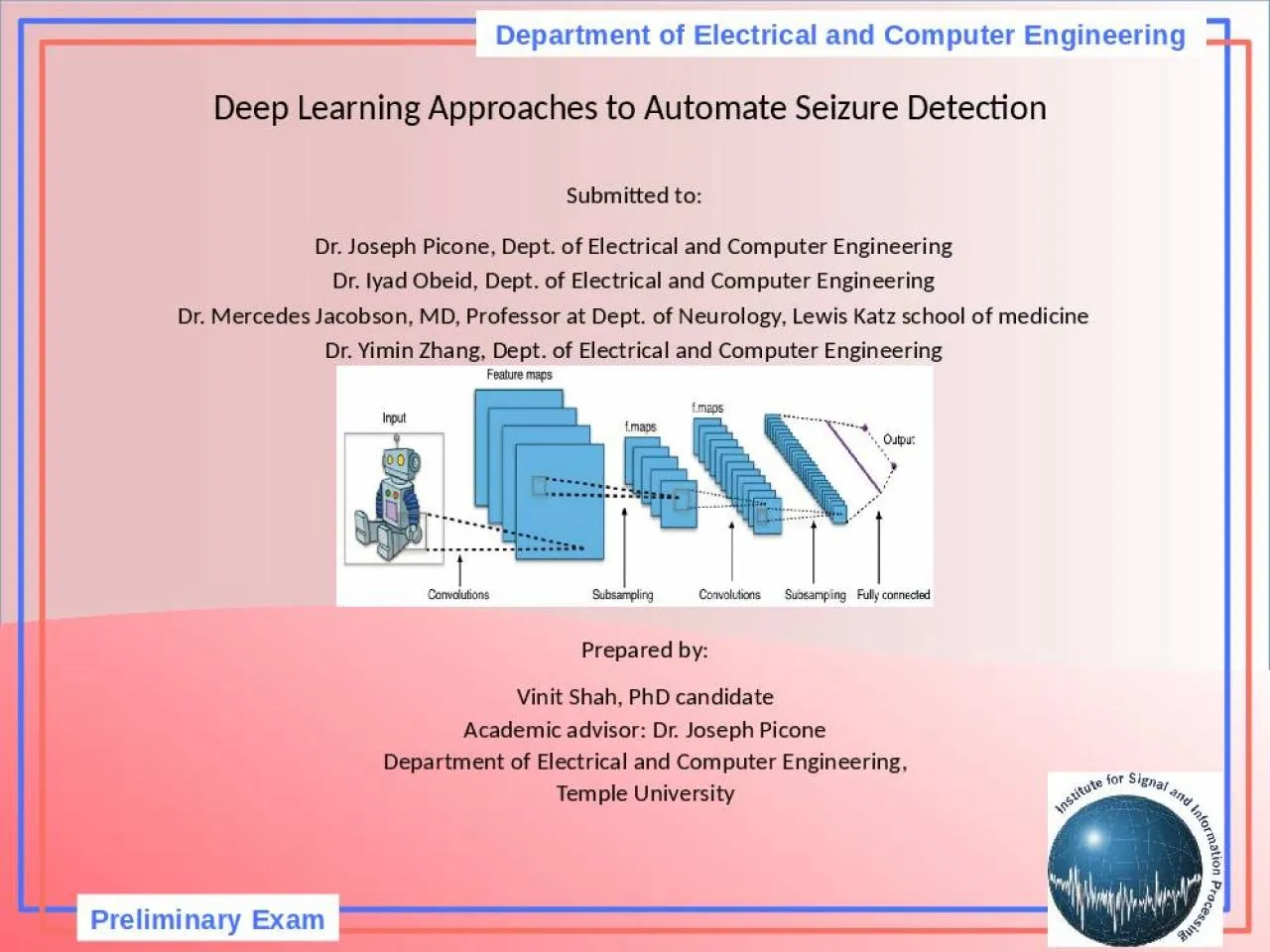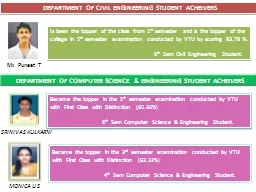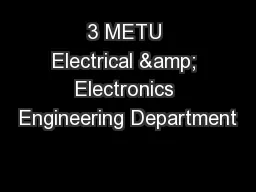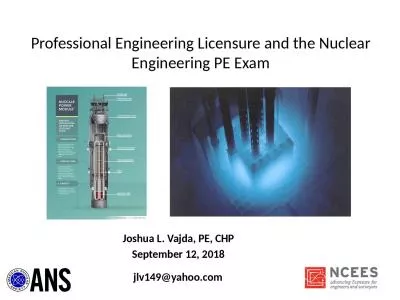PPT-Preliminary Exam Department of Electrical and Computer Engineering
Author : reese | Published Date : 2022-02-16
Deep Learning Approaches to Automate Seizure Detection Submitted to Dr Joseph Picone Dept of Electrical and Computer Engineering Dr Iyad Obeid Dept of Electrical
Presentation Embed Code
Download Presentation
Download Presentation The PPT/PDF document "Preliminary Exam Department of Electrica..." is the property of its rightful owner. Permission is granted to download and print the materials on this website for personal, non-commercial use only, and to display it on your personal computer provided you do not modify the materials and that you retain all copyright notices contained in the materials. By downloading content from our website, you accept the terms of this agreement.
Preliminary Exam Department of Electrical and Computer Engineering: Transcript
Download Rules Of Document
"Preliminary Exam Department of Electrical and Computer Engineering"The content belongs to its owner. You may download and print it for personal use, without modification, and keep all copyright notices. By downloading, you agree to these terms.
Related Documents













![[EBOOK] PPI FE Electrical and Computer Review Manual – Comprehensive FE Book for the](https://thumbs.docslides.com/1005963/ebook-ppi-fe-electrical-and-computer-review-manual-comprehensive-fe-book-for-the-fe-electrical-and-computer-exam.jpg)
